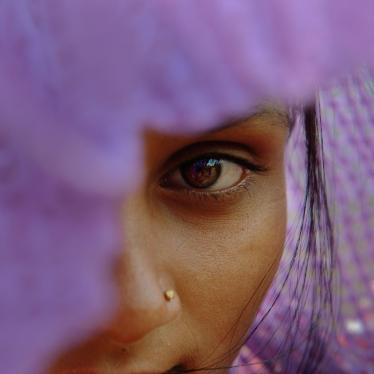(New York) – Pakistani authorities should bring to justice police who shot into a crowd and killed two lawyers protesting in the Punjab city of Daska, Human Rights Watch said today. An independent investigation should be launched into the killings.
On May 25, 2015, Daska police fired into a group of between eight to twelve lawyers protesting outside the municipal building, witnesses told Human Rights Watch. Two lawyers were killed, while another protester and a passerby suffered gunshot wounds and are hospitalized in critical condition. Punjab Chief Minister Muhammad Shehbaz Sharif has formed a Joint Investigation Team involving representatives of the police, the Inter-Services Intelligence, and the Intelligence Bureau to investigate the incident.
“Punjab’s security forces have a history of using excessive force against civilians with impunity,” said Phelim Kine, deputy Asia director. “An investigation by the police and intelligence agencies is insufficient to create public confidence in its outcome. An independent and impartial investigation is necessary if the authorities in Punjab are to stem the flow of public distrust and escalating protests.”
Witnesses said that the station house officer of Daska Police Station, Sardar Shehzad, fired a military-style assault rifle at the protesters, who were demonstrating outside the Tehsil Municipal Administration (TMA). The dead included the president of the Daska Bar Association, Rana Khalid Abbas, who died of gunshot wounds.
The protests began after a confrontation on May 25 between a lawyer and a staff member of the TMA’s record room. That rapidly escalated into an incident in which the authorities claim the lawyers allegedly “manhandled” TMA personnel and subsequently began protesting their treatment by TMA staff. Media accounts indicate that the shooting followed a heated verbal exchange between some of the protesting lawyers and the police, after which Shehzad fired his assault rifle into the group. Other police officers at the scene fired their assault rifles into the air in an apparent effort to disperse the protesters. Punjab authorities have suspended Shehzad as investigators examine the incident.
The killings have sparked province-wide protests by lawyers demanding a prompt and impartial investigation. Some of those protests have turned violent, with protesters attacking government and private property. The police have responded with teargas, baton charges, and rubber bullets. They have filed criminal charges, including under sections 6 and 7 of the Anti-Terrorism Act for public protests, against 52 protesters.
The Punjab police have a history of using excessive and lethal force against unarmed protesters. On June 17, 2014, police fired without warning on supporters of the Pakistan Awami Tehreek (PAT) political party who had attempted to resist police demolition of security barriers erected by PAT in front of its headquarters in the Lahore residential area of Model Town. At least eight PAT workers died of gunshot wounds in that incident.
The United Nations Basic Principles on the Use of Force and Firearms by Law Enforcement Officials, which set out international law on the use of force in law enforcement situations, provide that security forces shall as far as possible apply nonviolent means before resorting to the use of force. Whenever the lawful use of force is unavoidable, the authorities should use restraint and act in proportion to the seriousness of the offense. Lethal force may only be used when strictly unavoidable to protect life.
Under the basic principles, in cases of death or serious injury, appropriate agencies are to conduct a review and a detailed report is to be sent promptly to the competent administrative or prosecutorial authorities. Governments should ensure that arbitrary or abusive use of force and firearms by law enforcement officials is punished as a criminal offense. Superior officers should be held responsible if they knew or should have known that personnel under their command resorted to the unlawful use of force and firearms but did not take all measures in their power to prevent, suppress, or report such use.
“The Pakistani authorities need to find out why a police officer fired live ammunition into a group of protesting lawyers and bring those responsible to justice,” Kine said. “Law enforcement officials may only use lethal force as a last resort to protect lives.”







